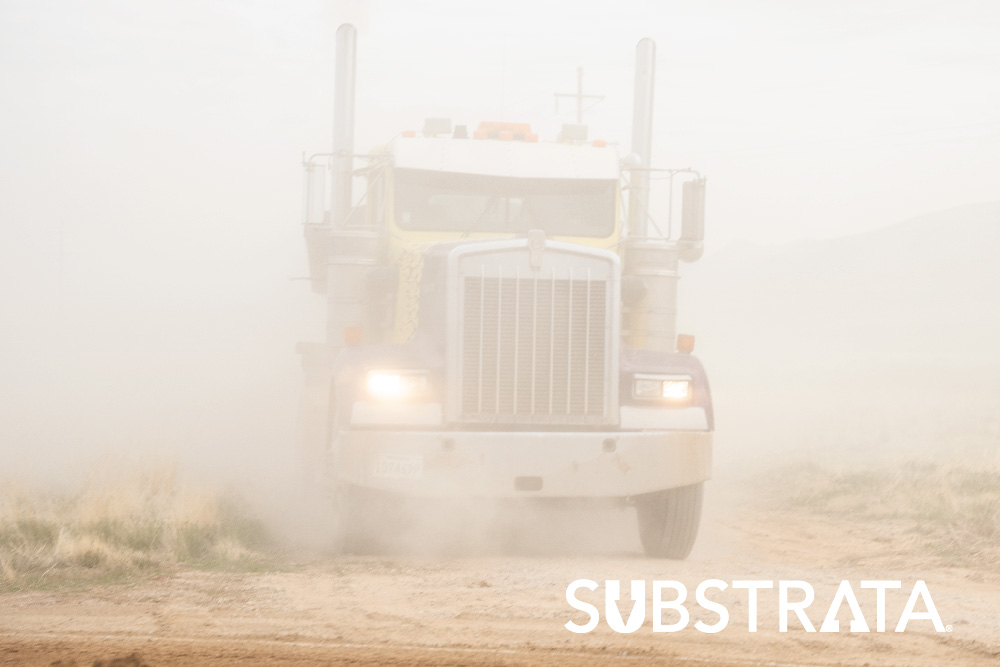
When constructing and maintaining unpaved roads there are a lot of variables to consider, the biggest among them is climate. The weather can affect a road greatly; a wet environment would mean that the road could get washed away or rutted frequently, while a dry climate could mean that the road produces a lot of dust. Dusty roads are a headache for everyone; the dust results in safety concerns on the roadway due to decreased visibility while also creating health concerns for those around the area through citizens inhaling the dust particles. Dust suppression is an age-old problem with many methods of treatment; some treatments are better than others, but it is important to note that there is not always one answer solution. In this article we will compare two methods: Magnesium Chloride and Perma-Zyme.
Magnesium Chloride
One of the most popular means of dust suppression is to apply Magnesium Chloride or Calcium Chloride to the soil. Soil treated with Magnesium Chloride or Calcium Chloride creates a moisture barrier in the soil, this moisture barrier essentially bonds the soil particles together which prohibits them from coming off of the ground and entering the surface. When applying magnesium or calcium chloride, the soil properties do not play a large factor so application works with virtually any soil.
While Magnesium and Calcium Chloride are readily accessible and versatile, there are some downsides to using them for dust suppression. One of the most considerable downsides to Magnesium or Calcium Chloride is that it is often messy for the traffic traveling on the road. The mess results from the soil treated with the chloride coming up from the ground and landing on the vehicles. When the soil dries, the chloride is drying and creates a thick salty residue that is often difficult to clean off cars. Another downside to a chloride treatment is that the chloride washes away during a rainstorm; this means that the treatment must be performed after every rainstorm, which would be cumbersome and costly in most situations.
Perma-Zyme
While Perma-Zyme is not famous for its dust suppression qualities, roads constructed with Perma-Zyme will see a drastic decrease in dust. When a road is constructed with Perma-Zyme, the solution is mixed into the soil and permanently stabilize's it creating a rock hard surface for ten plus years. When the surface has been cured and hardened, no soil particles will be able to come off of the surface and enter into the atmosphere. While Perma-Zyme will not “lock in" the soil particles from the surrounding area, it does lock them in when the road is built, and the only soil particles that are entering the atmosphere are particles that have found their way from the shoulder to the roadway surface. When the surface has fully cured and bonded, the surface will not produce any residue or substance that will cause a health or safety concern for the traffic.
Perma-Zyme does require there to be clay in the soil, while not every soil is compatible with Perma-Zyme. In most cases, dust problems occur due to the clay content. It is expected that if you are experiencing dust problems, your soil has clay in the soil.
While not every need for dust suppression is the same, it is important to remember the differences between all options. When most think of Perma-Zyme it is thought of to be a soil stabilizer that increases the strength and resiliency of the roadway, but it will also substantially decrease the dust. Unpaved roads constructed with Perma-Zyme will last 10 plus years and emit very little dust.
These Stories on Perma-Zyme